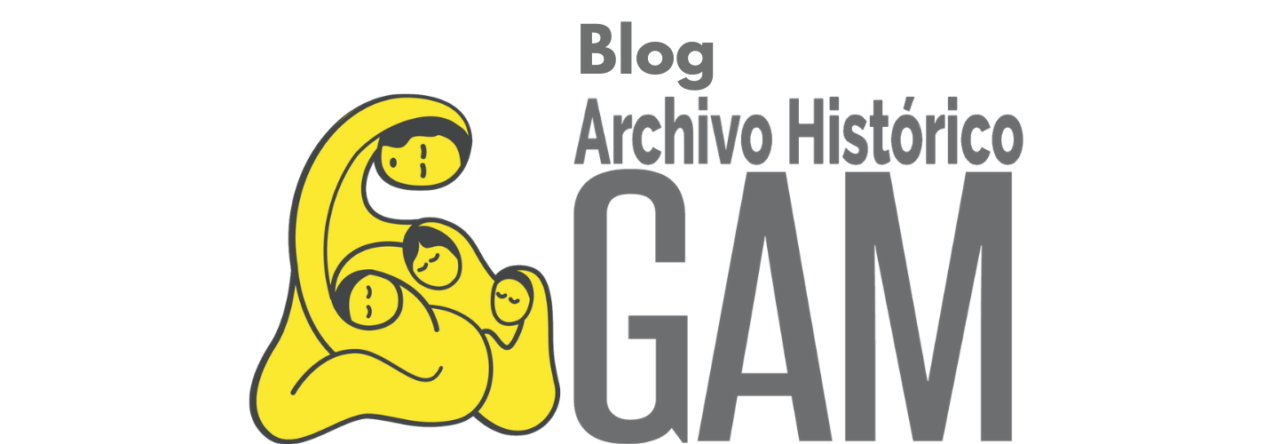Dec 13, 2018 • Alex Galarza
The Grupo de Apoyo Mutuo (GAM) Digital Archive is a project that aims to digitize, preserve, and provide access to over 3,700 case files of disappearances tied to Guatemala’s armed internal conflict (1960-1996). Our last public update introduced the partnership between Haverford College Libraries and the GAM and described our initial success in piloting scanning and description workflows. At that time, we had also created a system for securely sending scanned images from Guatemala City to Haverford and had hired our first cohort of Digital Scholarship Compañeros, paid undergraduate fellows, to describe and research the case files. Over the past year, the project team has worked hard to reach a few important milestones. This includes GAM staff digitizing half of the 3,725 case files (representing over eight linear meters of documentation) and creating a master case registry to preserve their physical order. Haverford librarians and students created custom web applications for processing, describing, and providing access to archival materials. The Compañeros have read, transcribed, and described hundreds of cases in the course of conducting their own original research. In this post, I detail the team’s work and reflect on ethics, capacity-building, and sustainability in the project.
At the end of 2017, we had successfully piloted a scanning and file transfer workflow but had only begun planning web applications for processing and opening up access to digitized case files of forced disappearance held at the GAM offices. At the start of the new year, Andy Janco, Digital Scholarship Librarian, led the development of our project’s processing layer in Django – an open source web framework written in the Python programming language. Andy worked with two Haverford students working in the library’s digital scholarship program, Ian Fisher ‘19 and Dylan Emery ‘18, to create a site that would allow team members to read, transcribe, and enter metadata for case files in addition to managing images as they arrived from Guatemala. This site, or processing layer, leveraged a file naming system developed in consultation with our Metadata Librarian, Emily Thaisrivongs, and College Archivist, Krista Oldham, that allows us to preserve the physical location of case files as we scan them. Luisa Garcia, then a high school student interning at the GAM offices, completed a master case registry of the 3,725 cases in the disappeared collection by hand. This allowed the team to link the correct physical organization of folders to this file naming system.
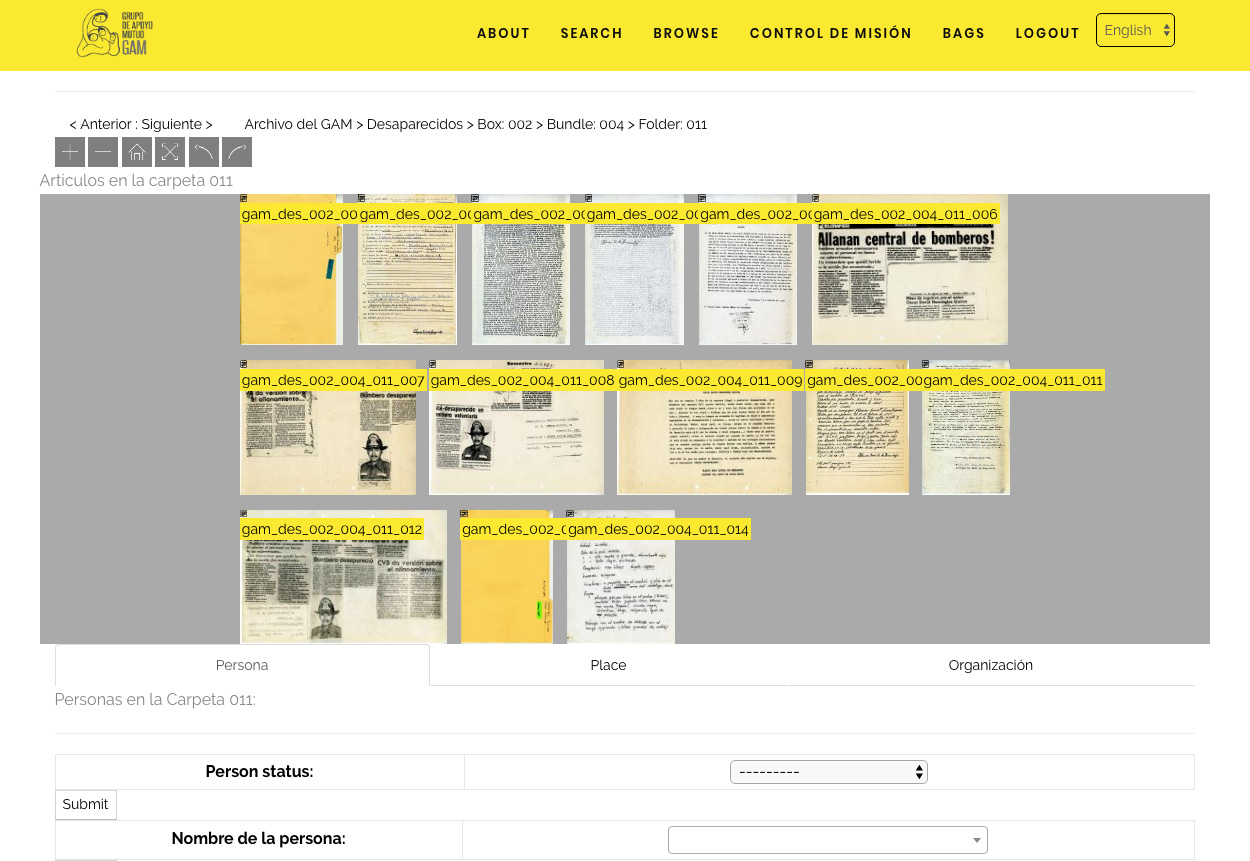
The Digital Scholarship Compañeros, tested descriptive workflows in the processing layer, developed research proposals for summer travel in Guatemala, and completed a workshop series taught by library staff on metadata, working with archival materials, and web tools for mapping and data visualization. The students were also able to meet and collaborate with GAM staff and experts on human rights archives in Latin America during a project summit we hosted in April. Daniel Alvarado, the GAM’s human rights adviser, visited Haverford alongside Kate Doyle of the National Security Archive and our colleagues at the University of Texas – Hannah Alpert-Abrams and Theresa Polk. Daniel and I were also invited by Haverford’s Center for Peace and Global Citizenship to travel to Notre Dame for the Global Service Learning Summit alongside other community organizations that partner with Haverford. The visit was a crucial opportunity to build relationships and community here on campus and virtually with our partner organization. Four of the Compañeros – Natalia Mora ‘21, Tania Ortega ‘19, Mariana Ramírez ‘20, and Rafael Rodríguez ‘20 were successful in securing summer funding for research in Guatemala and were energized by Daniel’s visit.
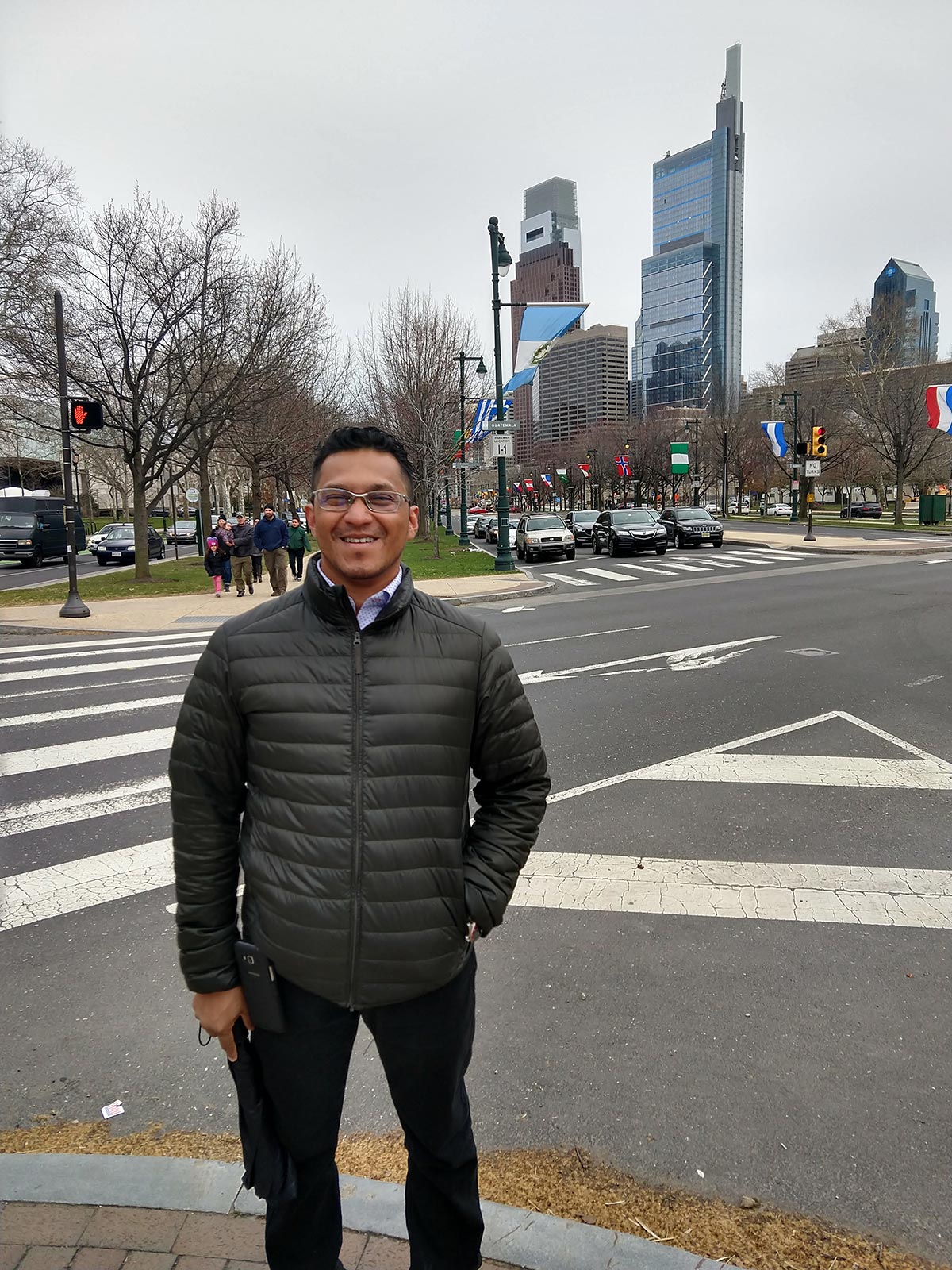
The Compañeros’ proposals included nine weeks of work in Guatemala that combined their research on case files with the experience of working with GAM staff to digitize and describe archival materials. This plan helped meet two critical goals of our project: 1) Building capacity at the GAM to digitize and describe materials and 2) Creating digital scholarship that demonstrated the potential of the GAM’s archive in affecting historical memory and efforts to seek justice in Guatemala. In late May, safety concerns led the college to cancel student travel. We were then faced with the challenge of maintaining student engagement and our commitments to the GAM. I wrote a post about how we successfully navigated this challenge here. Our students were able to engage virtually with the GAM and archival materials from Philadelphia and also traveled to visit archives and experts at the University of Texas and the National Security Archive.
Haverford also provided funds for the GAM to hire digitization specialists in Guatemala and the libraries sent two repurposed scanners for implementing our finalized digitization workflow. I traveled to Guatemala with Social Science Librarian Brie Gettleson over the summer to work with GAM staff and train Rita Celeste Villatoro and Pablo Galeano on the archive’s organization, our equipment, and our descriptive workflows. Within weeks, Celeste and Pablo were digitizing and sending dozens of cases per day in compressed files averaging around twenty-five gigabits of data per week.

On June 21, Celeste, Pablo, Brie, and I were invited to accompany the GAM to an event at the congressional building to recognize the Día Nacional contra la Desaparición Forzada (National Day against Forced Disappearance). Speakers urged members of Congress to pass legislation that would commit the government to investigating the thousands of cases of forced disappearance that remain unresolved, representing thousands of families without answers about their loved ones.
The GAM also celebrated its thirty-fourth anniversary in June, an event they mark annually with visits from surviving family members, colleagues in the human rights community, state officials, and members of the press. Our partners at the GAM allowed me to share a brief presentation with the audience on our efforts to create a digital archive. They also gave me a moment of tremendous professional and personal pride by making me an honorary member of the GAM.

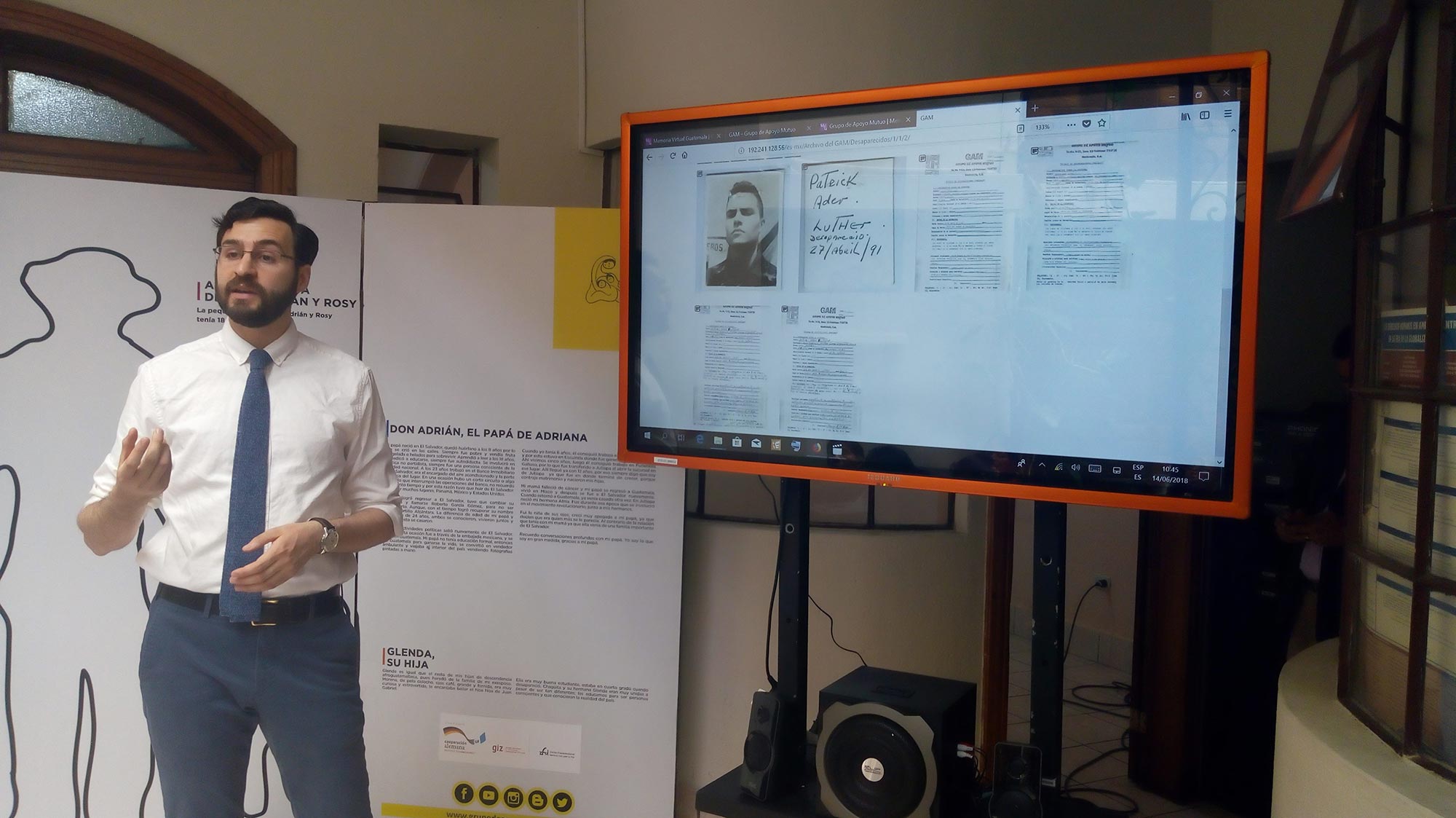
Our summer researchers – Natalia, Mariana, and Tania – all developed research projects focusing on specific areas of the archive. Natalia’s interest in U.S. policies and capacity-building in security forces led her to focus on violence in Chimaltenango in 1982 – a way of understanding the complicity of the United States in human rights violations. Mariana also focused on human rights violations outside of the capital in Rabinal, investigating the shape of violence against indigenous communities in Guatemala’s highlands. Finally, Tania focused on the discourse of motherhood in a single case where the mother of Alvarado wrote to state officials. Their research will be published on the site in the coming days. As student researchers identified and analyzed relevant cases in their own projects, Andy continued to lead improvements and increased functionality of the processing layer with Fiona Xu ‘21 and Rafael Rodríguez.
By the end of the summer, our student researchers had completed their projects and Celeste and Pablo were digitizing and describing documents at a rapid pace. We hired a new cohort of DS Compañeros to bring the total to eight students. Emily guided us in improving the processing layer to include the ability to create authority records that help us identify people, places, and organizations in the collection. The Compañeros have worked to create authority records in the collection with a critical approach to these acts of interpretation. Students have also developed or continued their research projects as they describe the case files. The Compañeros have had their work cut out for them as we have reached the halfway mark in digitizing 3,752 cases in the disappeared collection. The arrival of compressed files filled with scanned documents from Guatemala sets in motion a labor-intensive process of checking the integrity of the data, capturing and preserving metadata, and ingesting the images into our processing layer. Students are then able to transcribe and describe the case files that are most relevant to their research. They have also started working on creating authority records for a list of select cases we are planning to include in the public site.
In the fall, I have been teaching “Cold War Violence in Latin America: Archives, Historical Memory, and Social Justice” to bring archival materials into the undergraduate curriculum. The class examines the nature, historical roots, and present-day meanings of revolutionary and state-directed violence during the “Cold War” in Latin America. Students spend a portion of the class building a broad understanding of the region during the conflict before focusing on Guatemala’s armed internal conflict. This prepares them to participate in a workshop to describe case files from the GAM’s disappeared collection and complete a primary source analysis assignment. The project team and GAM staff have visited the class to share insights on the shaping and purpose of the digital archive.
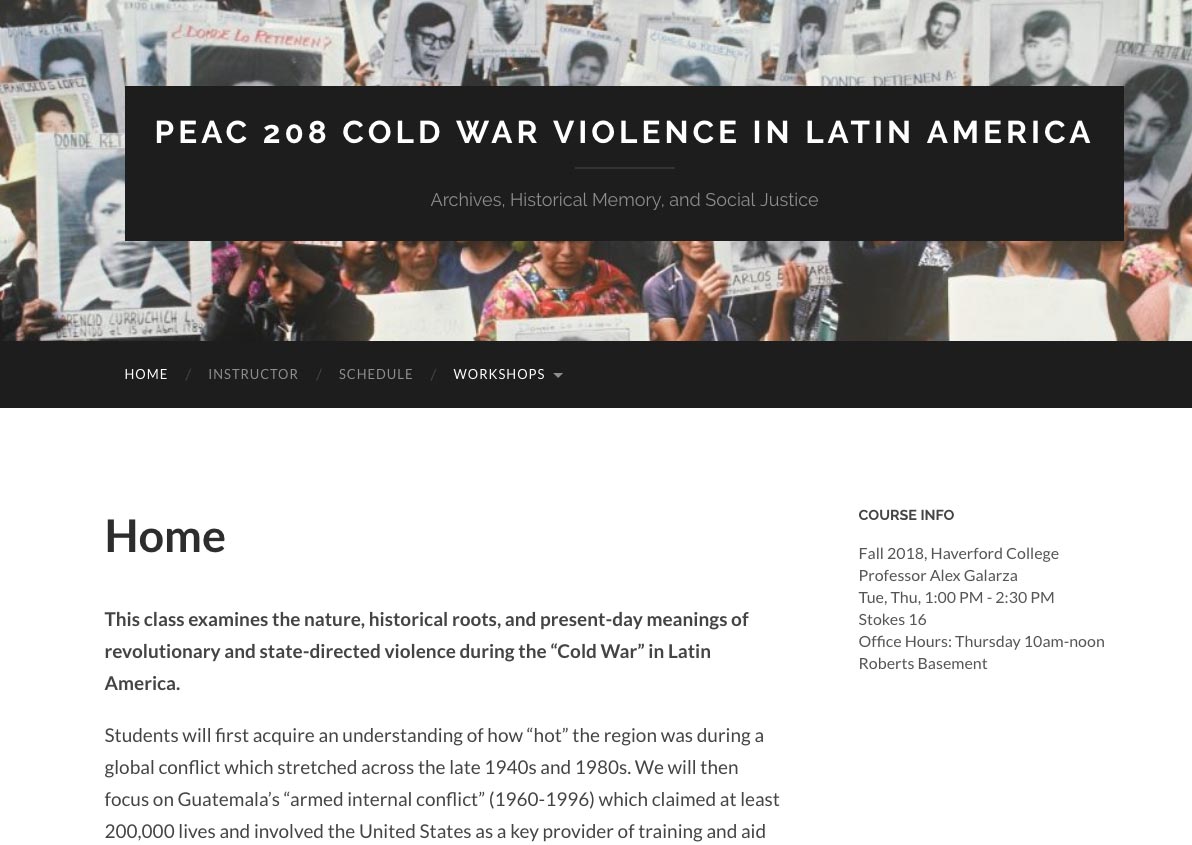
In October, we also received exciting news from CLIR in being awarded a $10,000 grant titled “The Pedagogy of Digitization: Guatemalan Records of Human Rights and Historical Memory.” The grant included sustaining funds for Celeste and Pablo’s positions in addition to supporting the development of documentation that treats each step in the digitization process as an opportunity for teaching and engagement. This documentation leverages the experiences and expertise of professionals at the GAM, LLILAS Benson staff at the University of Texas, and our team at Haverford. It aims to identify, document, and share resources that will allow digitization projects to treat each step in the digitization workflow as an opportunity for teaching and engagement through learning.
The project team has reached an exciting moment at the year’s end. GAM staff have been working to secure authorization from surviving family members to share a few dozen digitized case files for the public site. Our Compañeros have described and analyzed dozens of cases in Spanish for a public audience as we work with the GAM to finalize the site’s design. Andy and Haverford student Shaun Fedrick and Luis Contreras-Orendain have worked to leverage design and content from the processing site for the public version. I will return to Guatemala City in January to work with GAM staff on final revisions of the public site before launching the page in February. We are eager to share the site in the coming months and to continue our partnership with the GAM in using the digital archive to shift historical memory and seek justice for the disappeared.
